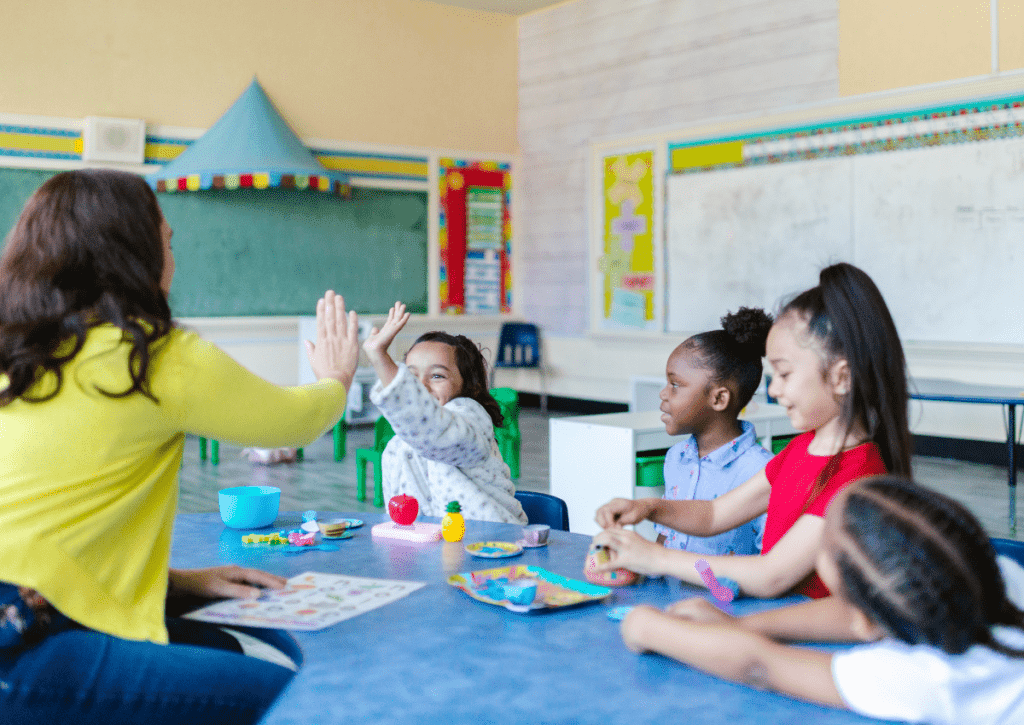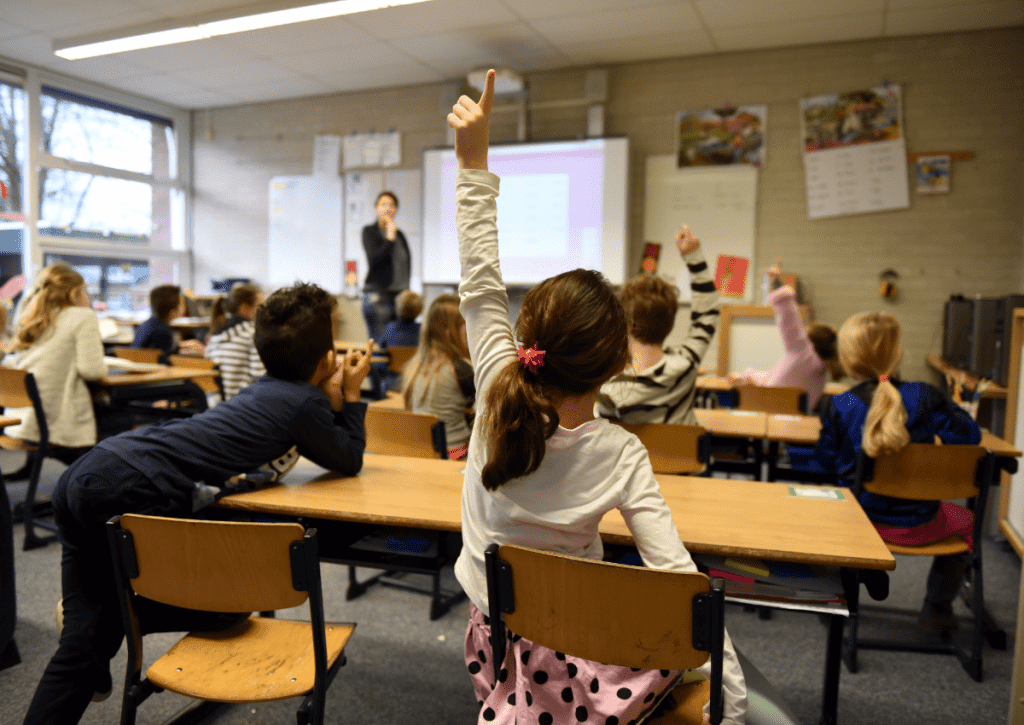What is classroom culture, and how can we improve it? Steve Jobs once said about technology that we have a choice: we can just “live or exist” in the world, or we can change things, interact with our world, and “make our mark upon it.” When it comes to the culture of your classroom, it is important that you realize you are in control as to what happens in your classroom and the environment you create.
Table of Contents
- Classroom culture
- Why is Classroom Culture Important?
- How to Begin Creating Classroom Culture
- 10 Ways to Create Positive Classroom Culture
- Strategies and Best Practices for Creating a Positive Classroom Culture
- Another Great Resource
Classroom culture
Is the entire environment and surroundings of your classroom. It is everything from the items on your bulletin board to the space that is available to move around, the desk arrangement, and the people who compose your class community. In the Ted Talks featuring Andrew Hammond, he points out in “Culture Before Curriculum” that the culture must be initiated first, which will lay the groundwork for the curriculum, not the other way around. Philosophy and culture trump curriculum because we need kids to feel motivated to engage before we can have a successful curriculum.
Why is Classroom Culture Important?
It is important to consider what you are in control of and make the changes that are necessary to create the most positive learning environment possible. If your class environment is positive, the students will reflect that in their attitudes, and they will feel more accepted by the peer group because of their attitude.
How to Begin Creating Classroom Culture
Now that you know you can create a positive classroom culture let’s take a look at some of the ways you can create that culture in your classroom. Think about all of the elements of your classroom environment and consider which ones are in your control.
Can you change the kids in your classroom? Yes and no. While teachers certainly influence the behavior of kids with rules and reactions to various students in different contexts, it is not easy to change kids’ personalities or ways of dealing with life and you wouldn’t want to.

Providing an atmosphere of equality, acceptance, and openness is the best way to nurture what kids are becoming without attempting to control their actions to a great degree. Expecting good behavior is understandable. You need all students to be on their best behavior at all times so that you are able to handle unexpected events and adapt to problems as they come up. But a good teacher knows how to manipulate the culture or the environment rather than the child, so that they are more likely to reflect that positivity.
10 Ways to Create Positive Classroom Culture
There are a number of ways to create a positive culture in your classroom. Below are some of the most important ones to include in your rules, bulletin board areas, and other spaces in your classroom.
1. Teach Kindness and be kind to everyone as much as possible at all times. Observe respectful behavior to others, the same behavior you would expect for yourself.
2. Anti-Bullying Policies are important to let kids know you have a zero tolerance for bullying and that everyone deserves to be left alone and not harassed.
3. Creating A Class Contract is a great idea where all students “sign” a contract stating that they agree with the rules of respect and mutual kindness so that it seems more like something that is understood from the beginning.
4. Classroom Rules And Expectations should include characteristics such as empathy and care so that you are not just setting up a classroom for academics. You are growing a learning community.
5. Positive Affirmations are a great thing because they cause students to look at things in a positive way and communicate that you expect them to do well. One way to do this is to start with “Today is a good day to…” then put up stick-it notes as to different things you want them to do that day.
6. Learn About Different Cultures so that students can develop empathy for those who grew up in a different place or time than them. This helps them develop empathy for those who are different and helps them gain respect for others. The activity linked in #6 is a printable passport activity that allows kids to learn about other countries’ cultures while motivating them to learn more about various ethics and ideals.
7. Culture And Traditions Units help children learn by inciting their curiosity about people from other places.
8. 10 More Ways To Create A Positive Learning Environment is a Pin on Pinterest that is sure to inspire you to get creative about how you create your class culture.
9. Small Things Teachers Can Do poster on Pinterest allows you to see how much a teacher can create and inspire their own positive learning community.
10. Brag Tag Bracelets are a tangible, wearable item that students can wear proudly to show they are striving to help build their own positive culture in their classrooms.
These suggestions are all good because they allow kids to look at things in a positive light, even when it has to do with rules and regulations. If students can see that everything you are expecting them to do is geared toward enhancing and creating the learning community, they will start to realize that it is something for them, the students, rather than something just geared for the teacher to have a peaceful classroom environment.

Remember, if kids feel like they are a part of their learning community, they are more likely to want to “interact with it, change it, make their mark upon it,” like Steve Jobs once said to his staff about technology innovations.
When kids invest in their school and classrooms, they feel a kind of ownership of the classroom and they have a reason to show respect and to expect positive change.
Strategies and Best Practices for Creating a Positive Classroom Culture
Make the beginning great
If students see bright colors, smiley faces, and nice work centers, they are much more likely to react in a positive manner. If you have these things set up from the beginning, you are more likely to be able to create a positive environment. Think about how you feel when you enter a room in your house. Rooms evoke some sort of response. If it is neat, cheery, and attractive, you are going to be more likely to get the results you want.

Set guidelines
It is important to have rules that kids can follow. It helps to establish what you expect from the beginning. But more importantly, it helps create expectations of all learners so that they become more of a mutually vested community. If one class member is not with the program or tries to start trouble, the other members can remind that student to do the right thing for the good of the class. This is where a positive reinforcement plan comes in also. If the teacher rewards the class for good behaviors, it may motivate students to get others to fly right, so that the class can have the goodies. This is known in psychology as a “contingency plan.”
Change the setup of the classroom to fit the activity
Even if you have a classroom with straight rolls, you can be flexible when the assignment calls for a more cooperative setting, such as moving desks in small circles or groups for more class peer involvement. This works well with writing groups and any cooperative assignments.
Spend time with individual students
Even though you may do a great job with instruction, it is important that you get to know students individually. This gives you more information to allow you to help each student and also tells you what motivates that person. The more you know about individual kids, the more you can command and motivate the community.
Assign tasks to specific students
Once you know what students can do, it can help boost their ego by assigning specific duties to kids with certain abilities. Let bright students be mentors to slower kids and let the slower kids have times that they show off one of their hobbies or skills to help their confidence, also.
Another Great Resource
Teach Simple is a great resource for teachers because of the wide variety of material available. Check out this Chinese culture video list that helps kids understand the Chinese culture.

This culture worksheet also addresses kids of different countries so that you can have assistance in integrating kids from other geographical areas into your classroom.
Also, having high-interest materials and units such as this Entertainment Technology module can make a big difference for less motivated learners.



